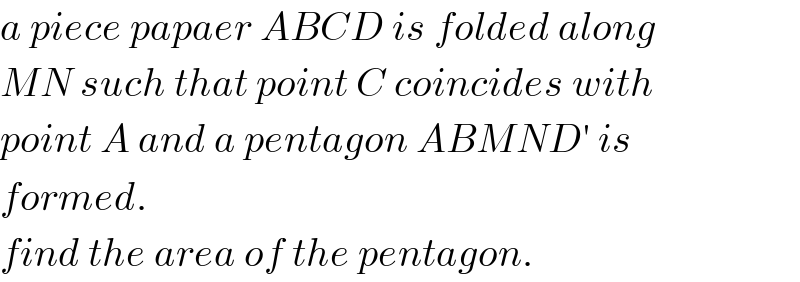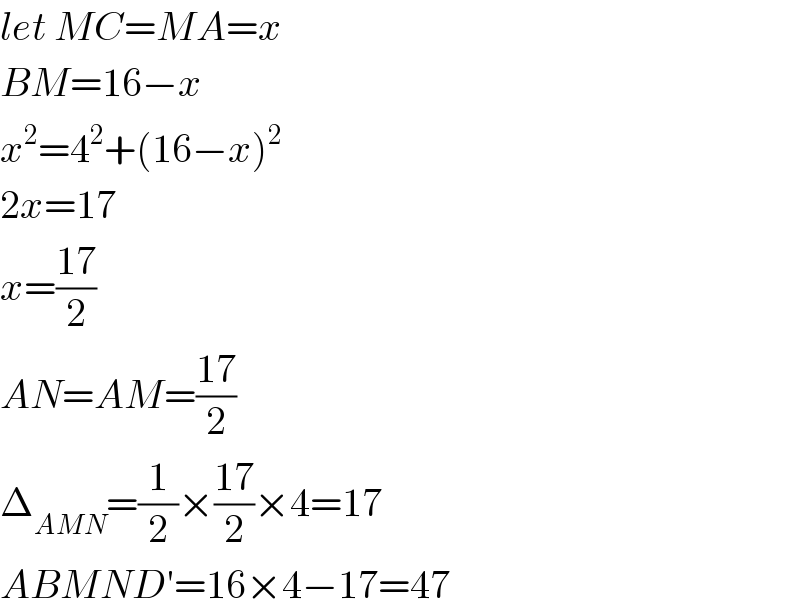
Question Number 67422 by mr W last updated on 27/Aug/19

Commented by Prithwish sen last updated on 27/Aug/19

$$\bigtriangleup\mathrm{AMN}\:\mathrm{is}\:\mathrm{an}\:\mathrm{isoceles}\:\mathrm{triangle}\:\mathrm{with}\:\mathrm{AM}=\mathrm{AN} \\ $$$$\mathrm{AM}+\mathrm{BM}=\:\mathrm{AN}+\mathrm{D}^{'} \mathrm{N}=\mathrm{16} \\ $$$$\mathrm{Area}\:\mathrm{ABMND}^{'} =\:\mathrm{Area}\:\mathrm{of}\:\mathrm{ABCD}\:−\mathrm{Area}\:\mathrm{of}\:\bigtriangleup\mathrm{AMN}. \\ $$
Commented by mr W last updated on 27/Aug/19

$${a}\:{piece}\:{papaer}\:{ABCD}\:{is}\:{folded}\:{along} \\ $$$${MN}\:{such}\:{that}\:{point}\:{C}\:{coincides}\:{with} \\ $$$${point}\:{A}\:{and}\:{a}\:{pentagon}\:{ABMND}'\:{is} \\ $$$${formed}. \\ $$$${find}\:{the}\:{area}\:{of}\:{the}\:{pentagon}. \\ $$
Answered by mr W last updated on 27/Aug/19

$${let}\:{MC}={MA}={x} \\ $$$${BM}=\mathrm{16}−{x} \\ $$$${x}^{\mathrm{2}} =\mathrm{4}^{\mathrm{2}} +\left(\mathrm{16}−{x}\right)^{\mathrm{2}} \\ $$$$\mathrm{2}{x}=\mathrm{17} \\ $$$${x}=\frac{\mathrm{17}}{\mathrm{2}} \\ $$$${AN}={AM}=\frac{\mathrm{17}}{\mathrm{2}} \\ $$$$\Delta_{{AMN}} =\frac{\mathrm{1}}{\mathrm{2}}×\frac{\mathrm{17}}{\mathrm{2}}×\mathrm{4}=\mathrm{17} \\ $$$${ABMND}'=\mathrm{16}×\mathrm{4}−\mathrm{17}=\mathrm{47} \\ $$
Commented by Prithwish sen last updated on 28/Aug/19

$$\mathrm{thank}\:\mathrm{you}\:\mathrm{sir}. \\ $$
